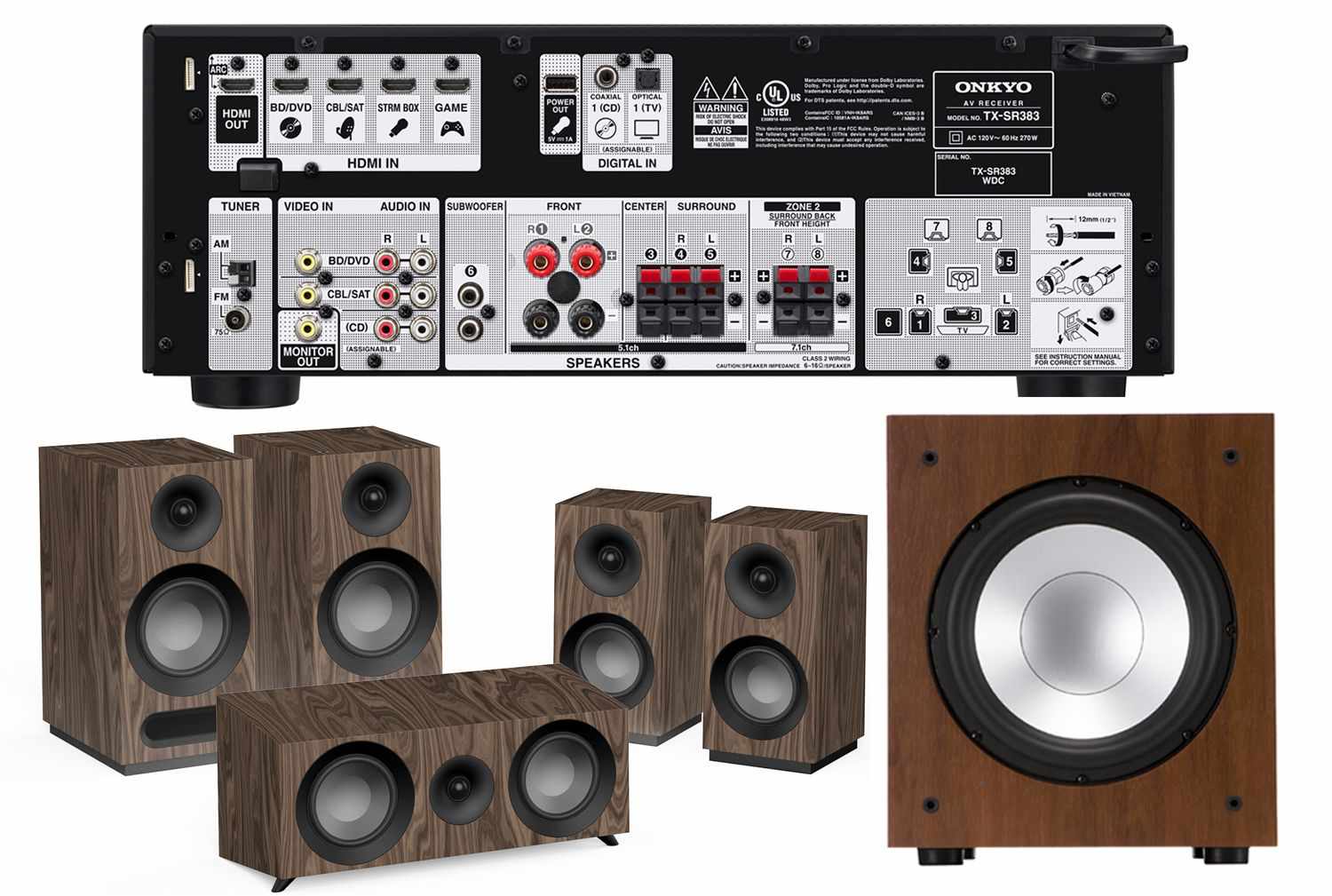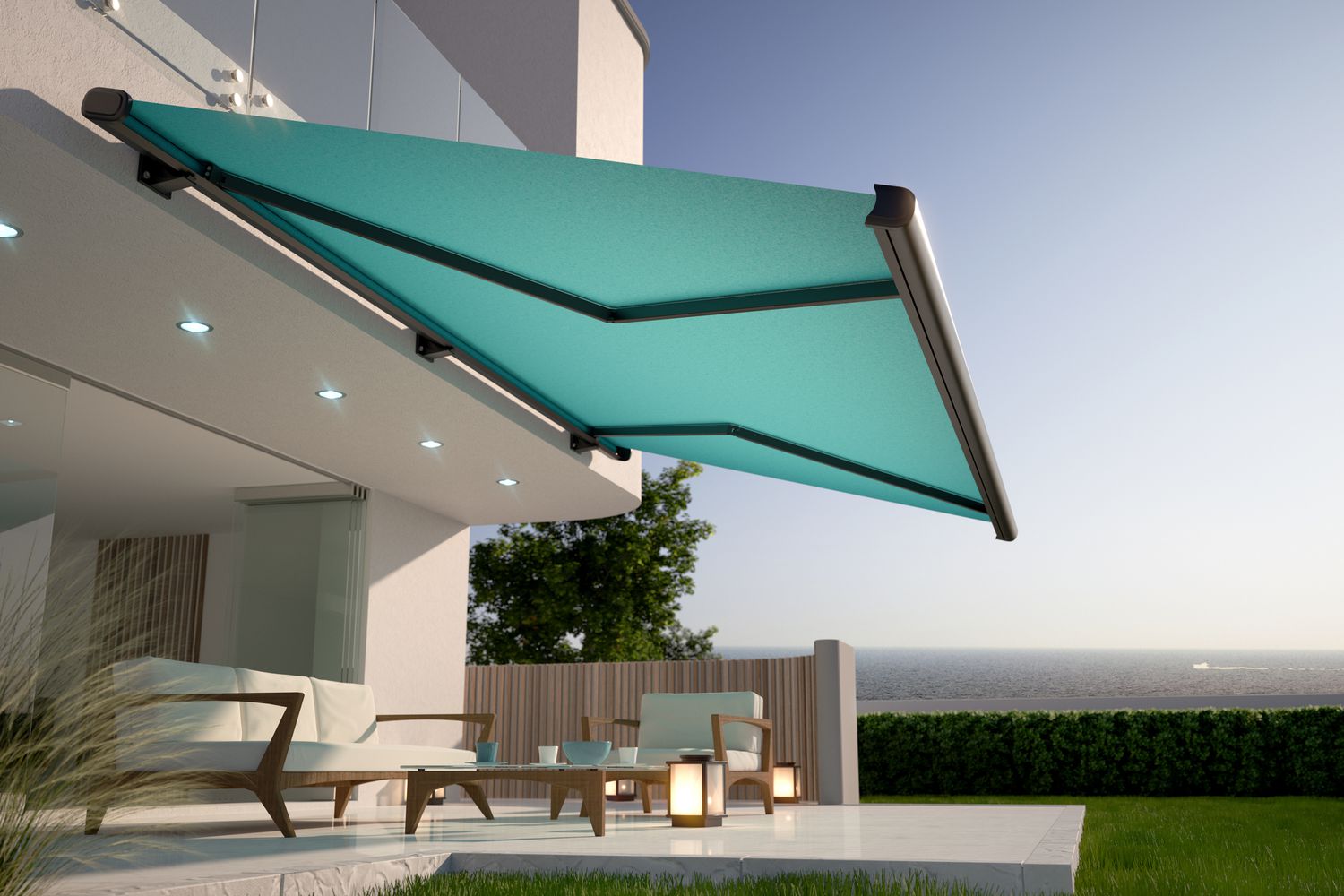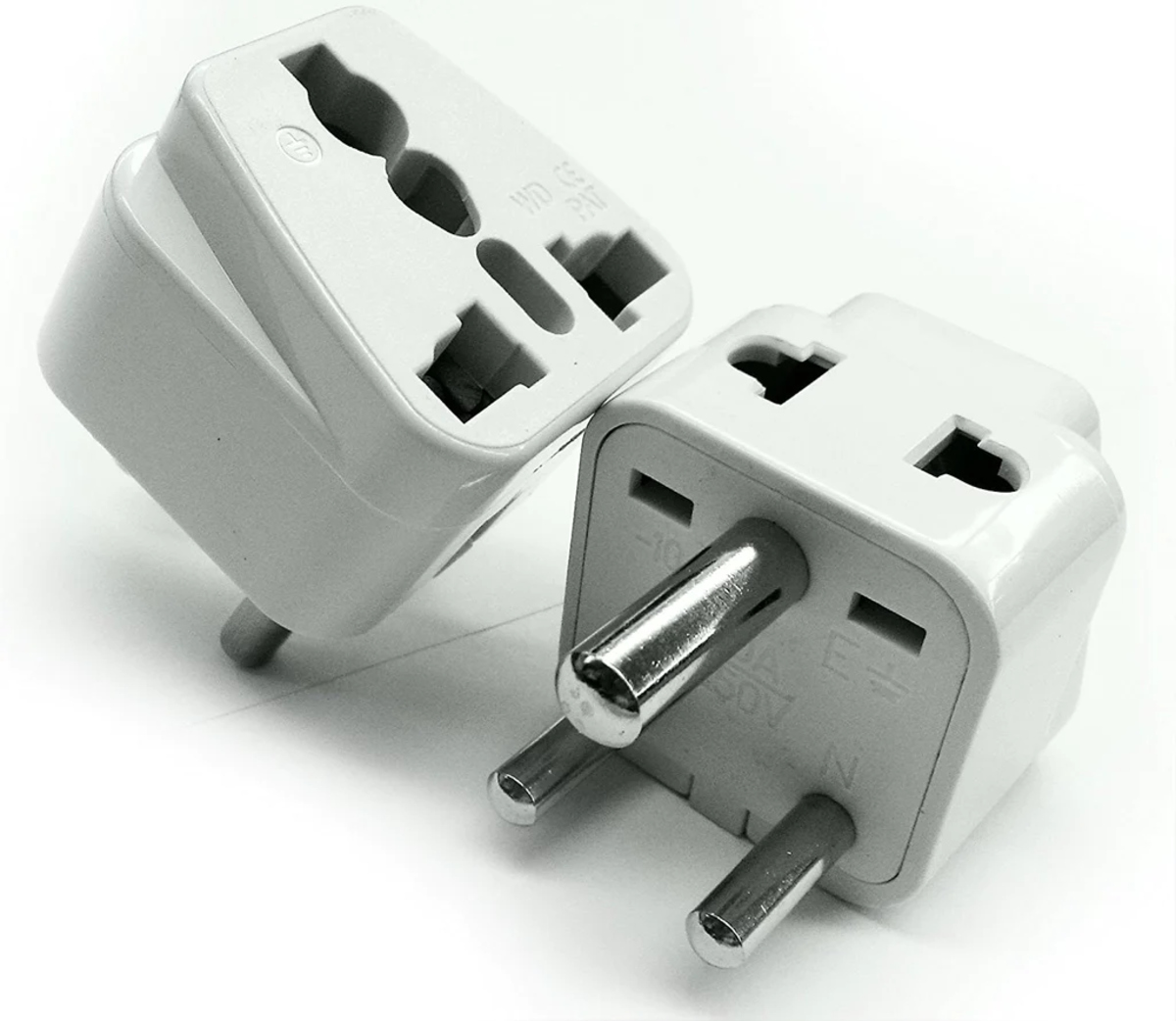Home>Technology>Home Entertainment Systems>What Do I Need For A Home Theater System


Home Entertainment Systems
What Do I Need For A Home Theater System
Modified: August 28, 2024
Discover the essential components for creating the ultimate home entertainment system. Find out what you need for a top-notch home theater setup today!
(Many of the links in this article redirect to a specific reviewed product. Your purchase of these products through affiliate links helps to generate commission for Storables.com, at no extra cost. Learn more)
Introduction
Creating a home theater system is an exciting endeavor that promises to transform your living space into a captivating entertainment hub. Whether you're a movie enthusiast, a gaming aficionado, or a music lover, a well-designed home theater system can elevate your audiovisual experience to new heights. From the immersive sound quality to the stunning visual display, every aspect of your home theater setup plays a crucial role in delivering a truly cinematic experience.
As you embark on this journey, it's essential to consider various factors, such as the layout of your space, the type of audio and video equipment that best suits your preferences, and the overall ambiance you aim to achieve. By carefully selecting the right components and optimizing the setup, you can create a personalized home theater that caters to your unique entertainment needs.
In this comprehensive guide, we will delve into the essential elements of a home theater system, offering valuable insights into the selection and integration of audio and video equipment, display options, seating arrangements, lighting considerations, soundproofing techniques, and the convenience of remote control and automation. By exploring these key aspects, you will gain a deeper understanding of the components necessary to craft a captivating home theater experience within the comfort of your own home.
Embark on this journey with an open mind and a keen eye for detail, as we unravel the intricacies of assembling a home theater system that not only meets but exceeds your expectations. Let's dive into the world of home entertainment and discover the magic of creating a captivating cinematic space that is uniquely yours.
Key Takeaways:
- Creating a home theater system is an exciting journey that involves choosing the right room, high-quality audio and video equipment, comfortable seating, immersive lighting, and advanced control systems for a personalized cinematic experience at home.
- The fusion of technology, design, and personal expression in a home theater system creates a captivating sanctuary for immersive storytelling, dynamic soundscapes, and visually stunning presentations, offering a symphony of sights and sounds that enrich the entertainment experience.
Choosing the Right Room
Selecting the ideal room for your home theater is a pivotal decision that significantly influences the overall viewing and listening experience. When evaluating potential spaces, consider the following factors to ensure an optimal setup:
Room Size and Layout
The dimensions of the room play a crucial role in determining the acoustics and visual immersion of your home theater. A larger room provides more flexibility in speaker placement and seating arrangements, allowing for a more expansive soundstage and accommodating larger screens. Conversely, a smaller room may necessitate strategic positioning of speakers and seating to maximize the viewing and listening experience.
Ambient Light Control
Controlling ambient light is essential for achieving an immersive viewing experience. Opt for a room with minimal natural light or invest in blackout curtains or blinds to minimize external light interference. Additionally, consider the option of dimmable lighting to create a cinematic ambiance during movie nights.
Sound Isolation
Select a room with minimal sound transmission to and from adjacent spaces. Sound isolation is crucial for preventing audio leakage and external disturbances, ensuring an immersive and undisturbed audio experience. If possible, choose a room with minimal shared walls to minimize sound transfer.
Accessibility and Comfort
Consider the accessibility and comfort of the chosen room. Ensure that the space allows for easy access to amenities such as restrooms and refreshments without disrupting the viewing experience. Additionally, prioritize comfort by selecting a room with adequate ventilation and temperature control to create a cozy and inviting atmosphere for extended viewing sessions.
Flexibility for Equipment Placement
Evaluate the room's layout to determine the flexibility for placing audio and video equipment. Consider the positioning of power outlets, cable access points, and potential installation of acoustic treatments or soundproofing materials. A well-designed room layout can streamline the installation process and optimize the performance of your home theater system.
By carefully assessing these factors, you can identify the most suitable room for your home theater, setting the stage for an immersive and captivating entertainment space. Whether it's a dedicated media room or a creatively repurposed living area, the right room forms the foundation for an exceptional home theater experience.
Audio Equipment
The audio equipment forms the backbone of your home theater system, shaping the immersive soundscapes that complement the visual experience. When selecting audio components, it's essential to consider the following key elements to achieve exceptional audio performance:
Surround Sound System
Investing in a high-quality surround sound system is fundamental to creating a captivating audio environment. A typical surround sound setup comprises a combination of speakers, including front, center, side, and rear speakers, along with a subwoofer. The 5.1 and 7.1 configurations are popular choices, offering multi-channel audio reproduction for a truly enveloping sound experience. The placement of these speakers is critical, as it directly impacts the spatial distribution of sound within the room, enhancing the sense of immersion during movies, games, and music playback.
Read more: What Tools Do You Need For HVAC
AV Receiver
An AV receiver serves as the central hub for your audio and video components, providing connectivity, processing, and amplification for your home theater system. When selecting an AV receiver, consider features such as support for the latest audio formats, HDMI connectivity for seamless integration with video sources, and advanced room calibration technologies that optimize audio performance based on the room's acoustics. Additionally, ensure that the receiver has ample power output to drive your speakers effectively, delivering dynamic and distortion-free sound reproduction.
Speaker Selection
Choosing the right speakers is crucial for achieving a balanced and articulate soundstage. Opt for speakers that complement the acoustic characteristics of your room and align with your listening preferences. Floor-standing speakers offer robust bass response and full-range sound reproduction, while bookshelf speakers provide versatility in placement and can be paired with dedicated subwoofers for enhanced low-frequency output. Additionally, consider in-wall or in-ceiling speakers for a streamlined and discreet audio setup, ideal for minimizing visual clutter while maintaining exceptional sound quality.
Subwoofer
The subwoofer plays a pivotal role in reproducing low-frequency effects, adding depth and impact to movie soundtracks and music. When selecting a subwoofer, prioritize models that deliver clean and powerful bass response, seamlessly integrating with the main speakers to create a cohesive sonic experience. Adjustable crossover settings and phase controls allow for precise tailoring of the subwoofer's output, ensuring seamless integration with the overall sound system and optimizing bass performance based on room acoustics.
Calibration and Room Acoustics
Calibrating your audio system and addressing room acoustics are essential steps in maximizing the performance of your speakers and subwoofer. Utilize room correction software provided by AV receivers to analyze and compensate for acoustic anomalies, ensuring accurate sound reproduction across the listening area. Additionally, consider acoustic treatments such as bass traps, diffusers, and acoustic panels to minimize reflections and standing waves, creating a more controlled and balanced acoustic environment for your home theater.
By carefully selecting and integrating these audio components, you can elevate your home theater experience with immersive and impactful sound reproduction, bringing your favorite movies, music, and games to life with unparalleled audio fidelity. The synergy between high-quality audio equipment and a well-designed room layout sets the stage for an exceptional home theater experience, captivating audiences and delivering a truly cinematic sonic journey.
Read more: How Many Tons HVAC Do I Need
Video Equipment
The video equipment in a home theater system plays a pivotal role in delivering stunning visual experiences, whether you're enjoying blockbuster movies, immersive gaming sessions, or captivating multimedia presentations. When assembling the video components of your home theater, several key elements come into play, each contributing to the overall visual fidelity and cinematic immersion.
Display Options
The centerpiece of your home theater's visual prowess is the display, and selecting the right display option is crucial for achieving an exceptional viewing experience. When considering display options, you'll encounter a range of choices, including:
-
Television (TV): A high-quality television serves as a popular choice for home theater setups, offering a diverse selection of screen sizes, resolutions, and display technologies. From vibrant LED and QLED panels to the deep blacks of OLED displays, modern televisions provide impressive visual clarity and color reproduction, catering to a wide spectrum of viewing preferences.
-
Projector and Screen: For a truly cinematic experience, a projector paired with a dedicated projection screen can transform your space into a captivating theater environment. Projectors offer flexibility in screen size and aspect ratio, allowing for larger-than-life visuals that immerse viewers in expansive, theater-like presentations. When selecting a projector, consider factors such as brightness, contrast ratio, and throw distance to ensure optimal performance in your home theater room.
-
Screen Size and Viewing Distance: Whether you opt for a television or a projector setup, determining the ideal screen size and viewing distance is essential for maximizing visual impact. Consider the room dimensions, seating layout, and the screen's aspect ratio to achieve an immersive viewing experience without compromising visual clarity or comfort.
High-Definition and 4K Ultra HD
The advent of high-definition (HD) and 4K Ultra HD content has revolutionized home entertainment, offering unparalleled visual detail and realism. When selecting a display, prioritize models that support high-definition and 4K content, providing crisp image quality, vibrant colors, and enhanced clarity for an immersive viewing experience. Additionally, consider compatibility with High Dynamic Range (HDR) technology, which expands the display's contrast and color range, further enriching the visual presentation with lifelike depth and realism.
Video Sources and Connectivity
Incorporating diverse video sources into your home theater setup enhances its versatility and entertainment capabilities. Whether it's Blu-ray players, gaming consoles, media streaming devices, or cable/satellite boxes, ensure that your display and AV receiver support a variety of connectivity options, including HDMI, optical, and wireless streaming protocols. Seamless integration of video sources enables effortless access to a wide range of content, from cinematic blockbusters to streaming services and interactive gaming experiences.
Read more: How Do I Know If My HVAC Needs Freon
Calibration and Visual Optimization
Calibrating your display to achieve optimal visual performance is a critical step in enhancing the viewing experience. Utilize built-in calibration tools or professional calibration services to fine-tune the display's settings, including color accuracy, brightness, contrast, and motion handling. Additionally, consider ambient light conditions and implement light control measures to minimize glare and distractions, ensuring that the visuals remain captivating and immersive throughout your viewing sessions.
By carefully considering these aspects of video equipment selection and integration, you can elevate your home theater's visual presentation, delivering captivating and immersive experiences that rival traditional cinema settings. The synergy between high-quality displays, versatile video sources, and meticulous visual optimization sets the stage for a truly cinematic journey within the comfort of your home.
Display Options
The choice of display options is a pivotal decision that significantly influences the overall visual experience in a home theater system. When considering display options, individuals are presented with a diverse array of choices, each offering unique features and capabilities to cater to varying preferences and room configurations.
Television (TV)
A high-quality television serves as a popular choice for home theater setups, offering a diverse selection of screen sizes, resolutions, and display technologies. Modern televisions, ranging from vibrant LED and QLED panels to the deep blacks of OLED displays, provide impressive visual clarity and color reproduction. The flexibility in screen sizes allows homeowners to select a television that best suits their room dimensions and viewing preferences, ensuring an immersive and captivating visual experience.
Projector and Screen
For those seeking a truly cinematic experience, a projector paired with a dedicated projection screen can transform any space into a captivating theater environment. Projectors offer flexibility in screen size and aspect ratio, allowing for larger-than-life visuals that immerse viewers in expansive, theater-like presentations. When selecting a projector, factors such as brightness, contrast ratio, and throw distance should be considered to ensure optimal performance in the home theater room. The choice between a television and a projector ultimately depends on the homeowner's preference for screen size, viewing distance, and the desired cinematic impact.
Screen Size and Viewing Distance
Whether opting for a television or a projector setup, determining the ideal screen size and viewing distance is essential for maximizing visual impact. Considerations such as room dimensions, seating layout, and the screen's aspect ratio play a crucial role in achieving an immersive viewing experience without compromising visual clarity or comfort. The harmonious balance between screen size and viewing distance ensures that every seat in the home theater room offers an optimal vantage point for enjoying movies, games, and multimedia content.
The selection of display options is a deeply personal choice, influenced by individual preferences, room layout, and the desired cinematic experience. Whether it's the vibrant realism of a high-quality television or the immersive grandeur of a projector and screen combination, the chosen display option sets the stage for captivating visual journeys within the comfort of one's home.
Seating and Furniture
The selection of seating and furniture in a home theater system is a crucial aspect that directly impacts the comfort, aesthetics, and overall cinematic experience. When designing the seating arrangement and choosing furniture for your home theater, several key considerations come into play, each contributing to the creation of a captivating and inviting entertainment space.
Theater Seating
Investing in dedicated theater seating enhances the immersive nature of the home theater experience. Purpose-built theater seats offer ergonomic designs, plush cushioning, and integrated features such as cup holders and reclining mechanisms, providing unparalleled comfort for extended viewing sessions. When selecting theater seating, consider the following factors:
-
Seating Configuration: Choose between individual recliners, loveseats, or multi-seat rows to accommodate varying audience sizes and preferences. The arrangement should optimize sightlines to the screen while maintaining a cohesive and inviting layout.
-
Material and Upholstery: Opt for high-quality, easy-to-clean upholstery materials that complement the room's decor and withstand the rigors of regular use. Leather, faux leather, and high-performance fabrics are popular choices, offering durability and luxurious appeal.
-
Comfort and Ergonomics: Prioritize seating options that offer lumbar support, ample cushioning, and adjustable features to cater to individual comfort preferences. Ergonomically designed seats contribute to a relaxing and enjoyable viewing experience.
Furniture and Room Layout
In addition to theater seating, the selection and placement of furniture play a vital role in shaping the ambiance and functionality of the home theater space. Consider the following aspects when incorporating furniture into your home theater room:
-
Media Consoles and Storage: Integrate media consoles or entertainment centers to house audiovisual equipment, gaming consoles, and media libraries. These units provide organization and accessibility while contributing to the room's aesthetic appeal.
-
Accent Tables and Accessories: Incorporate accent tables, ottomans, and side tables to enhance convenience and comfort within the theater space. These additions offer practical surfaces for drinks, snacks, and personal items, ensuring a seamless and enjoyable viewing experience.
-
Room Layout and Traffic Flow: Arrange furniture to facilitate smooth traffic flow and unobstructed views of the screen from every seating position. Consider the placement of furniture in relation to speaker locations, ensuring optimal acoustics and visual cohesion.
Aesthetic Enhancements
Beyond functionality, the aesthetic appeal of seating and furniture contributes to the overall ambiance of the home theater. Consider the following aesthetic enhancements to elevate the visual appeal of the space:
-
Color Coordination: Select furniture and seating options that complement the room's color palette and decor theme, creating a cohesive and visually appealing environment.
-
Acoustic Treatments and Décor: Integrate acoustic panels, decorative wall art, and sound-absorbing materials into the room's design to enhance both the visual and acoustic aspects of the space.
-
Customization and Personalization: Explore customization options for theater seating, allowing for personalized features such as embroidered logos, motorized recline mechanisms, and tailored upholstery selections to reflect individual style preferences.
By carefully considering these elements, you can curate a home theater space that not only delivers exceptional comfort and functionality but also captivates the senses with its aesthetic allure. The synergy between thoughtfully selected seating, purposeful furniture arrangements, and aesthetic enhancements sets the stage for an immersive and visually captivating home theater experience.
Lighting
Lighting plays a pivotal role in shaping the ambiance and visual appeal of a home theater space, contributing to the overall comfort, functionality, and immersive experience. When designing the lighting scheme for a home theater, careful consideration of various lighting elements is essential to create a captivating and versatile environment.
Ambient Lighting Control
Controlling ambient lighting is crucial for establishing an immersive and cinematic atmosphere within the home theater. Dimmable lighting fixtures, such as recessed ceiling lights or wall sconces, offer flexibility in adjusting the room's overall illumination to suit different viewing scenarios. By incorporating dimmable lighting controls, homeowners can effortlessly transition from pre-show gatherings and intermissions to full cinematic immersion, enhancing the overall viewing experience.
Accent and Task Lighting
Strategic placement of accent and task lighting fixtures further enhances the functionality and visual appeal of the home theater space. LED accent lights along the floor or behind seating platforms can provide subtle yet impactful illumination, adding a touch of elegance while enhancing safety in low-light conditions. Task lighting options, such as adjustable wall-mounted lamps or console-mounted fixtures, offer targeted illumination for reading, gaming, or other activities without causing glare or distractions during movie screenings.
Read more: What Does An Amplifier Do For A Home Theater
Lighting Control Systems
Integrating lighting control systems, such as smart dimmers and programmable lighting scenes, elevates the convenience and versatility of the home theater environment. These systems enable seamless control of lighting levels, color temperatures, and ambiance presets, allowing homeowners to tailor the lighting to specific entertainment modes or personal preferences. Additionally, the integration of lighting control with home automation platforms offers the convenience of centralized control, enabling synchronized adjustments of lighting, audio, and video settings with the touch of a button or voice command.
Light Fixtures and Aesthetic Enhancements
Selecting light fixtures that complement the room's decor and enhance the overall aesthetic appeal is essential for creating a visually captivating home theater space. Consider incorporating decorative pendant lights, wall-mounted fixtures, or customizable LED lighting solutions to add a touch of sophistication and personality to the room. Additionally, the integration of lighting elements into architectural features, such as cove lighting or tray ceilings, can elevate the visual allure of the space while contributing to a more immersive and dynamic viewing environment.
Light Control and Glare Mitigation
Efficient light control measures, such as blackout curtains, motorized shades, or light-blocking blinds, are essential for mitigating external light intrusion and minimizing glare on the viewing screen. By implementing these light control solutions, homeowners can ensure that the visual integrity of the projected or displayed content remains uncompromised, creating an optimal viewing environment with minimal distractions.
By carefully considering these lighting elements and integrating them into the home theater space, homeowners can curate an environment that not only enhances visual comfort and functionality but also captivates the senses with its immersive lighting ambiance. The synergy between ambient, accent, and task lighting, coupled with advanced lighting control systems, sets the stage for an exceptional home theater experience, enveloping audiences in captivating visual splendor within the comfort of their own home.
Soundproofing
Soundproofing is a critical consideration in creating a home theater environment that offers an immersive and undisturbed audiovisual experience. Effective soundproofing measures are essential for minimizing sound transmission to and from the home theater space, ensuring that the audio remains contained within the room while preventing external noise from disrupting the viewing and listening experience.
Read more: How Many Btu AC Do I Need
Acoustic Insulation and Materials
The foundation of soundproofing begins with the selection and installation of acoustic insulation materials. High-density fiberglass insulation, acoustic foam panels, and soundproofing mats are commonly used to absorb and dampen sound waves, reducing the transmission of airborne noise between walls, floors, and ceilings. By incorporating these materials into the construction or renovation of the home theater space, homeowners can create a more acoustically isolated environment, minimizing sound leakage and enhancing the overall audio fidelity.
Sound Isolation Techniques
In addition to acoustic insulation, sound isolation techniques play a crucial role in preventing sound transmission through structural elements. Double-stud walls, resilient channel systems, and mass-loaded vinyl barriers are effective solutions for decoupling walls and ceilings, reducing the transfer of vibrations and airborne noise. By implementing these sound isolation methods, homeowners can create a more acoustically isolated environment, minimizing sound leakage and enhancing the overall audio fidelity.
Sealing and Isolation of Entry Points
Addressing potential entry points for sound transmission is essential for comprehensive soundproofing. Sealing gaps around doors, windows, and electrical outlets with acoustic caulks and weather-stripping materials helps minimize sound leakage, creating a more airtight and acoustically controlled environment. Additionally, the installation of solid-core doors with proper seals and soundproofing gaskets further enhances the isolation of the home theater space, ensuring that sound remains contained within the room.
Room within a Room Construction
For homeowners seeking the highest level of sound isolation, the concept of "room within a room" construction offers unparalleled acoustic control. This approach involves building an isolated inner room with its own floor, walls, and ceiling, effectively creating a self-contained acoustic environment within the existing space. By decoupling the inner room from the surrounding structure and incorporating specialized acoustic treatments, homeowners can achieve exceptional soundproofing and acoustic performance, resulting in a truly immersive home theater experience.
By integrating these soundproofing measures and techniques, homeowners can create a home theater space that not only delivers exceptional audio fidelity but also ensures a tranquil and undisturbed viewing environment. The synergy between acoustic insulation, sound isolation, and meticulous sealing techniques sets the stage for a captivating and immersive audiovisual journey within the comfort of one's home.
Remote Control and Automation
Remote control and automation technologies play a pivotal role in enhancing the convenience, functionality, and overall user experience within a home theater environment. By integrating advanced control systems and automation solutions, homeowners can streamline the operation of audiovisual components, lighting, and environmental settings, creating a seamless and immersive entertainment space.
Smart Home Integration
The integration of home theater systems with smart home platforms enables centralized control and automation of various functions. Smart home hubs, such as voice-activated assistants and dedicated control interfaces, provide intuitive access to entertainment systems, allowing users to adjust audio settings, select media sources, and control lighting with simple voice commands or touchscreen interactions. This seamless integration fosters a user-friendly and interconnected entertainment ecosystem, enhancing the overall accessibility and enjoyment of the home theater experience.
Universal Remote Control Solutions
Universal remote control devices offer a consolidated and user-friendly approach to managing multiple audiovisual components within the home theater setup. These advanced remotes are designed to interface with a wide range of devices, including AV receivers, media players, streaming devices, and smart TVs, providing unified control over diverse entertainment sources. The intuitive layout and programmable features of universal remotes simplify the operation of complex audiovisual systems, offering a cohesive and streamlined user experience.
Automated Lighting and Environment Control
Automation extends beyond audiovisual components to encompass lighting and environmental settings within the home theater space. Smart lighting systems, motorized shades, and climate control solutions can be integrated to synchronize with entertainment modes, creating tailored lighting scenes and environmental adjustments that complement specific viewing experiences. Whether it's dimming the lights for movie screenings, adjusting room temperature for gaming sessions, or creating ambient lighting presets for music listening, automated environmental control enhances the immersive and personalized nature of the home theater environment.
Customized Scene Programming
The ability to program customized scenes and automation routines empowers homeowners to tailor the home theater environment to their specific preferences. Scene programming allows for the creation of predefined settings that encompass audiovisual configurations, lighting levels, and environmental adjustments, enabling seamless transitions between different entertainment modes. Whether it's activating a "Movie Night" scene that dims the lights, lowers the screen, and adjusts audio settings, or initiating a "Gaming Mode" scene that enhances visual and environmental elements, customized scene programming elevates the versatility and user-centric design of the home theater space.
Remote Monitoring and Management
Remote monitoring and management capabilities provide homeowners with enhanced oversight and control of their home theater systems. Through dedicated mobile apps or web-based interfaces, users can remotely monitor system status, manage content playback, and adjust automation settings from anywhere, offering unparalleled convenience and flexibility. This remote accessibility ensures that the home theater environment remains effortlessly controllable, even when users are away from the primary entertainment space.
By embracing remote control and automation technologies, homeowners can elevate their home theater experience, fostering a harmonious blend of convenience, functionality, and personalized entertainment. The seamless integration of smart home solutions, universal remote control devices, automated lighting and environmental control, customized scene programming, and remote monitoring capabilities sets the stage for a truly immersive and user-centric home theater environment.
Conclusion
In conclusion, the journey of creating a captivating home theater system is a multifaceted endeavor that encompasses a harmonious integration of audio and video equipment, thoughtful room design, comfortable seating arrangements, immersive lighting, effective soundproofing, and advanced control and automation solutions. Each element contributes to the creation of a personalized entertainment space that transcends traditional viewing experiences, offering a cinematic journey within the comfort of one's home.
The selection of the right room sets the stage for an optimal home theater environment, providing the foundation for immersive audiovisual experiences. Careful consideration of room size, ambient light control, sound isolation, accessibility, and equipment placement ensures that the chosen space aligns with the desired cinematic vision.
The integration of high-quality audio equipment, including surround sound systems, AV receivers, speakers, and subwoofers, elevates the auditory experience, enveloping audiences in rich and dynamic soundscapes. Calibration and room acoustics further enhance the performance of audio components, ensuring accurate sound reproduction and balanced acoustics throughout the viewing area.
The video equipment, whether in the form of televisions or projectors, delivers stunning visual presentations, complemented by high-definition and 4K Ultra HD content. The careful selection of display options, consideration of screen size and viewing distance, and visual optimization techniques contribute to captivating and immersive visual experiences.
Seating and furniture selections, coupled with strategic lighting designs, create a comfortable and visually appealing environment, enhancing the overall ambiance of the home theater space. Soundproofing measures and advanced control and automation technologies further elevate the functionality and convenience of the entertainment ecosystem, ensuring an undisturbed and user-centric viewing experience.
The culmination of these elements results in a home theater system that transcends traditional entertainment setups, offering a personalized and immersive cinematic journey. Whether enjoying movies, gaming, or music, the carefully curated home theater space becomes a sanctuary for captivating audiovisual experiences, fostering moments of relaxation, excitement, and shared entertainment.
In essence, the art of crafting a home theater system is a testament to the fusion of technology, design, and personal expression, culminating in a space that transcends mere entertainment and becomes a gateway to captivating storytelling, immersive soundscapes, and visually stunning presentations. It is within this realm of cinematic splendor that the true magic of home entertainment unfolds, offering a symphony of sights and sounds that captivate the senses and enrich the lives of those who embark on this extraordinary journey.
Frequently Asked Questions about What Do I Need For A Home Theater System
Was this page helpful?
At Storables.com, we guarantee accurate and reliable information. Our content, validated by Expert Board Contributors, is crafted following stringent Editorial Policies. We're committed to providing you with well-researched, expert-backed insights for all your informational needs.






0 thoughts on “What Do I Need For A Home Theater System”